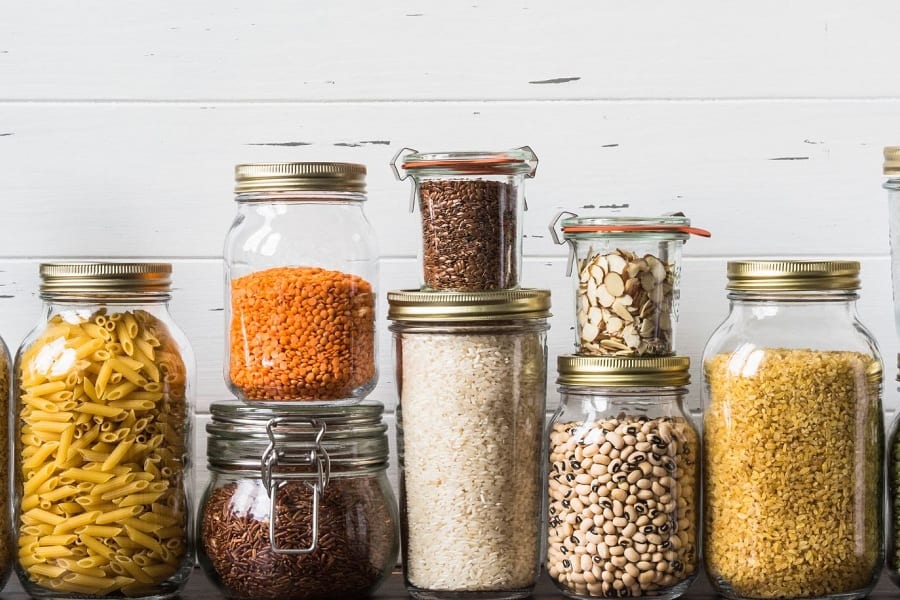The backbone of a prepper life is a prepper pantry. However, it’s essentially just the same as an average pantry but made to last and more well thought out.
This place is where all the foodstuffs you’ll need in case of a catastrophe or disaster are stored.
The items here are typically shelf-stable foods that can last a long time, like dry beans and rice, freeze-dried or dehydrated foods, canned goods, etc.
Having all these kinds of foodstuffs stockpiled can help you, and your loved ones get through many different types of disasters and emergencies.
Emergency scenarios are an excellent time to access a stockpiled prepper pantry. If you stock your prepper pantry just right, you’ll have the supplies you need to handle virtually any emergency.
A well-stocked prepper pantry could end up being the lifeline you need if there’s a life-altering event that impacts the whole town, state, country, or your lives.
From an epidemic, long-term power outage, or natural disaster to an unexpected job loss, your prepper pantry can protect your family from starvation.
Contents
What’s In A Prepper Pantry?
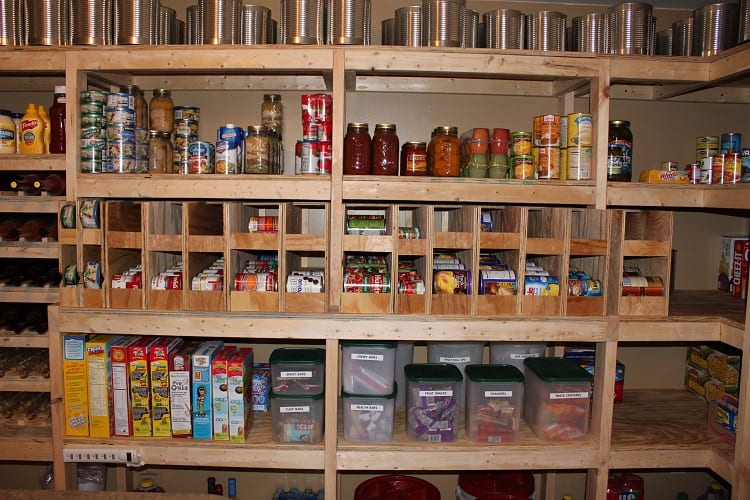
A prepper pantry can have either traditional or real food. Real food is stuff that’s similar to traditional food. It’s food that’s very close to its natural state.
These kinds of food have minimal processing and limited ingredients. But these real foods, at the same time, need to be non-perishables.
So, what kind of food fits this description? All types of food items, don’t fret. Even if you happen to be in an emergency where you’ll have to rely on this type of food to survive, you don’t have to bore your palate.
All you need to do is just play around with different recipes.
Some of the foods you’ll typically find in a prepper pantry include things like;
- Canned beans and dry beans
- Fruit
- Vegetables
- Various kinds of protein (including canned fish and chicken)
- Coffee beans
- Oatmeal
- Pasta
- Rice
Stocking a prepper pantry with traditional foods can prove a bit much trickier. In an emergency, where you’ll need to rely on your food storage more than usual, you might find yourself using canned fish to cook with instead of fresh fish.
You’re probably thinking how that’ll taste.
Okay, it won’t taste like the real deal, but it’ll do just fine in an emergency. Anyway, when you’re stocking your prepper pantry, think about the fresh foods you like to eat and then get the non-perishable alternatives.
Once you’ve figured out what you want to buy, you can practice coming up with some exciting recipes using these non-perishable alternatives.
Why You Need A Prepper Pantry
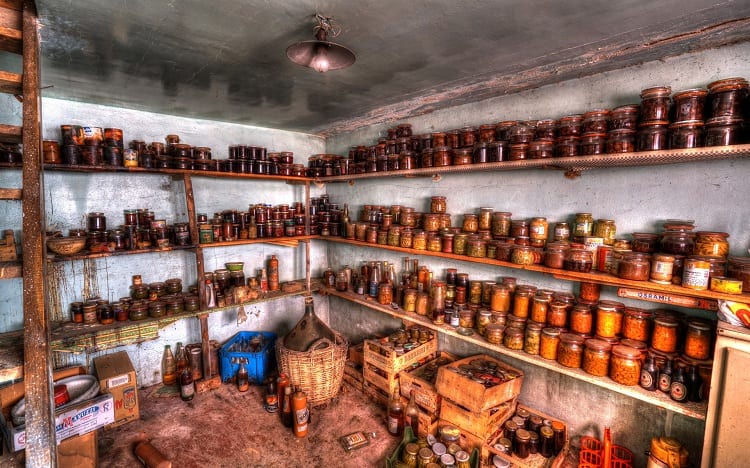
Failure to plan is planning to fail. It’s always better to be safe than sorry. Preparing beforehand will help keep you at ease. Having access to extra food in case of an emergency will provide you with peace of mind.
However, more importantly, being able to take care of yourself, your family, and your neighbors and friends, if possible, enables governmental agencies and food banks to ensure the societies that are the most vulnerable are taken care of.
Prepper Pantry Supply Types
#1 72-Hour Supply
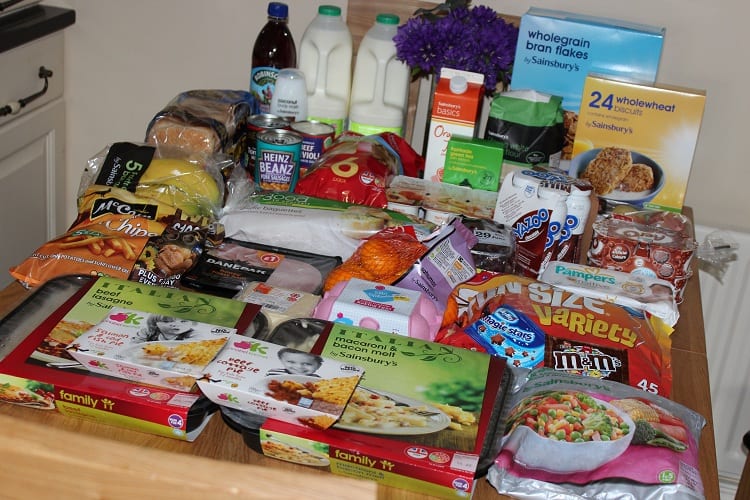
A 72-hour food supply is usually the bare minimum to help you buy a little time until you can get help.
A 72-hour supply becomes essential for such things as bad storms, evacuations, power outages, or damage that’s been caused by natural disasters, and so on.
When making 72-hour food supplies, consider buying low-maintenance foodstuffs that don’t need cooking, water, or refrigeration.
Consider storing some of these food items in your cars where you know you can get to them even when you’re away from home.
#2 Regular Extended Supply
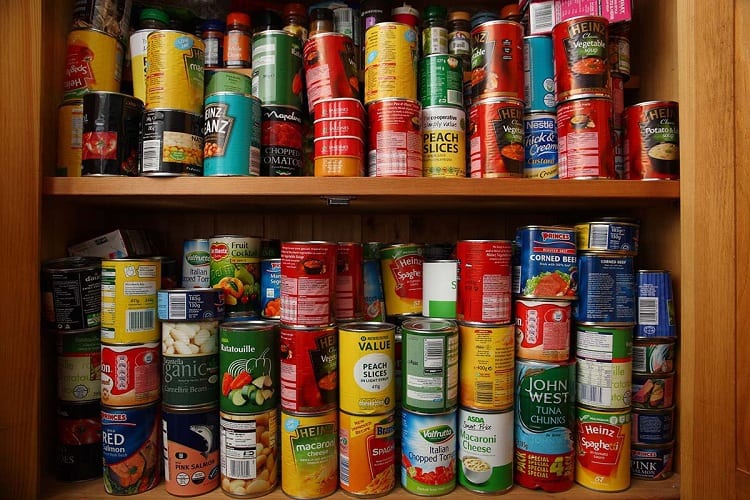
Regular extended supplies are what many preppers out there call a working pantry.
It’s where you’re buying things that you already purchase in excess quantities, so in case something happens, you and your loved ones can continue regularly eating for about 4 to 6 weeks without a lot of changes.
Food items that you need to freeze so that they can last longer are essential when you’re coming up with a regular extended supply. Also, you’ll need to find replacements for the perishables like dairy, veggies, and fruit.
#3 Last Resort Supply
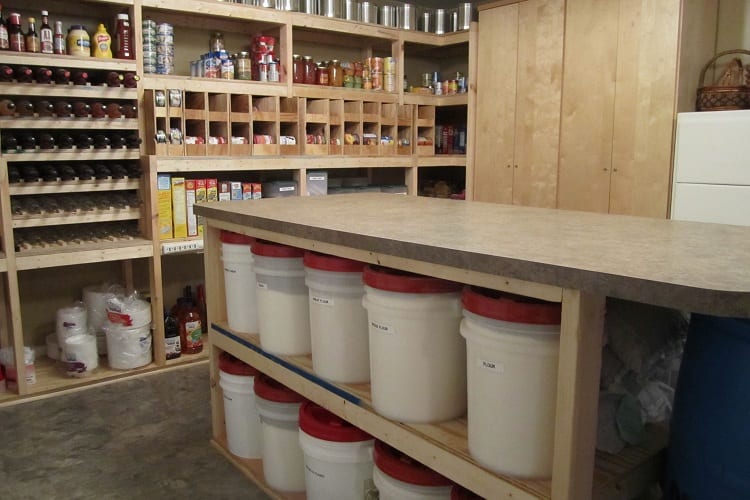
Last resort supplies are meant to be the last priority options after you’ve already created other food supply categories. Some people might not want to go this route at all, which is okay.
This type of prepper pantry supply is for the more hardcore survival situations, and it includes you buying pre-packaged, long-term survival foods and a seed bank.
With this prepper pantry type, you also may have to consider getting tools to fish and hunt.
How To Start A Prepper Pantry
#1 Know why you’re prepping
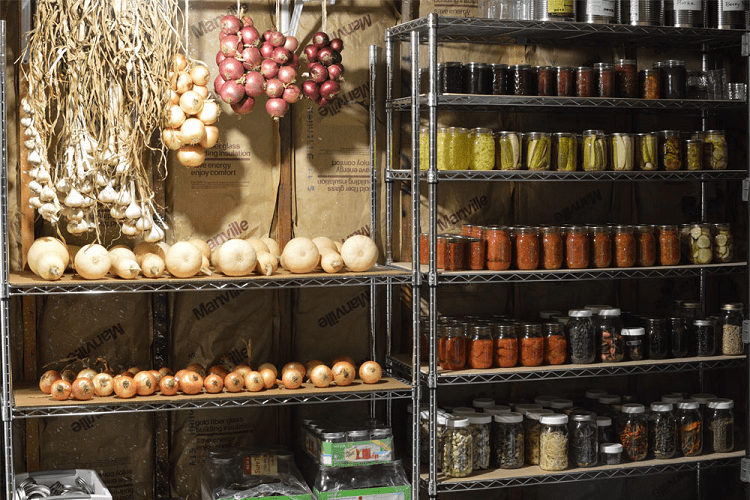
You don’t have to prep for every emergency. However, you might want to strongly consider prepping for the major ones that are most likely to happen in your area.
You also need to know what backup supply you’d like to build.
#2 Set A Budget
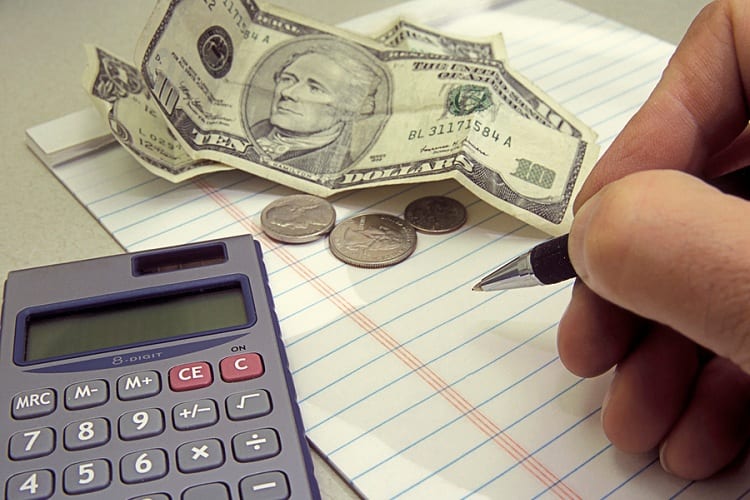
You need to know how much you’ll be spending and how much money you can contribute to the backup supply you’ll have for every week/month.
People who live paycheck to paycheck might find it a bit harder to buy all the extra supplies and food they’ll need. However, living this way means that it’ll be more vital for them to access essentials.
#3 Come up with a healthy prepper pantry
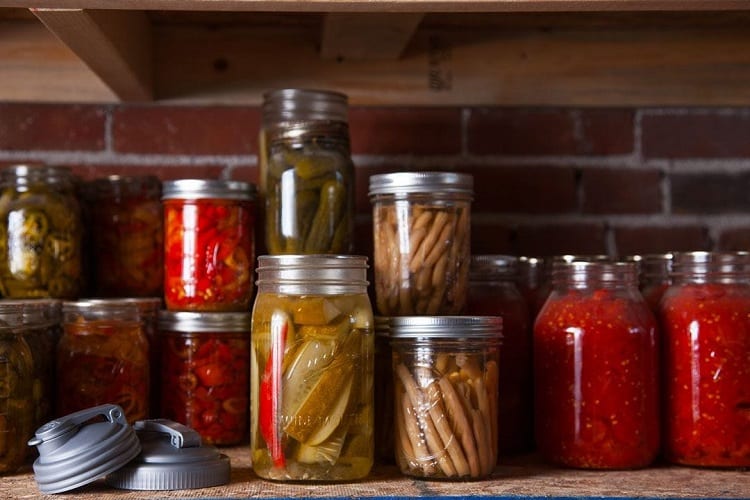
When you look at some of the prepper pantries out there, you’ll notice that the people that have created them might just end up dying of a heart attack or diabetes rather than starvation.
Your health is the best asset you’ve got in life, and eating low-quality foodstuffs is one of the best ways you can make it worse.
Okay, yes, survival is more important than healthy eating during emergencies, but you really have to choose between the two. You can meet both needs at the same time.
There are many organic shelf-stable, preservative-free, and whole-food options available to you.
You’ll also want to consider fiber, protein, and healthy fat sources so that you can meet all your daily needs when planning your meals and buying foods.
#4 Know how to store your food
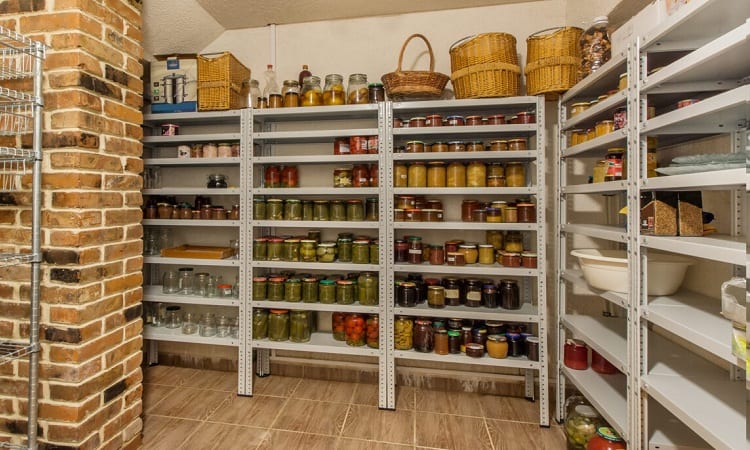
It’s one thing to purchase a two-month food supply. However, storing it is a whole other thing. Finding a storage location is very important before you go too far with your stockpiling.
Prepper pantries don’t necessarily need to be an actual pantry. You also don’t have to put everything in one place (most survivalists believe it’s better to have your stuff placed in more than one spot).
While some folks have entire prepper storage spaces that they can use to place their food in, others might need to be a bit more creative.
#5 Have meal plans with printed recipes
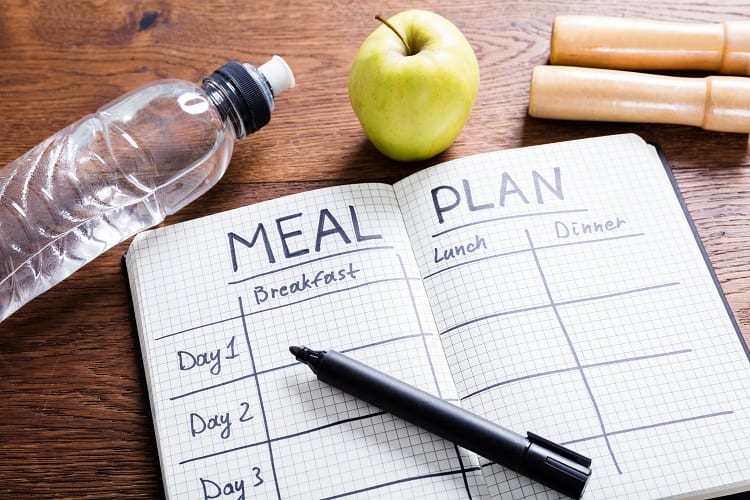
Besides knowing the amount of calories you’ll need, you also need to know how much of each kind of food you’ll need to buy.
If you want to do this, you might want to consider coming up with meal plans that include all the foods you plan on using in your recipes.
Once you figure out what you’ll be eating, you’ll know how much you need to get. If you do meal planning that’ll last a few weeks, it’s easy to divide or multiply to hit your targets.
Another thing you’ll need to consider having is printed cards and printed recipes that you can store alongside your emergency food supply. It is both for should there be a power outage and for convenience.
With the recipes, you come up with, include a few altered instructions to accommodate alternative cooking methods.
#6 Know how long the food lasts
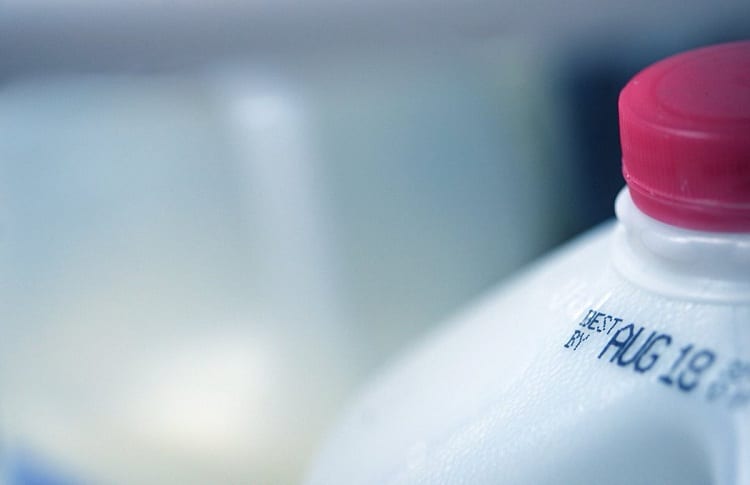
For every food item you buy, check the item’s Best-By date and then use a black marker to write it again more prominently on the front. Most shelf-stable foodstuffs are still edible past the item’s Best-By date.
Especially when you store them correctly in a dry, cool place.
Canned foods are still safe to eat way past the Best-By date. However, that’s only the case if the can isn’t damaged and if the food inside isn’t too acidic.
Wrapping Up
Try not to get overwhelmed by the whole process. It really isn’t as hard as most people tend to think it is. Prepper pantries are essentially like extended pantries.
We covered a lot in this article. Most people are not fully prepared for natural disasters and emergencies.
Think about how the world is right now. If recent events have taught us anything, it’s that having access to extra food and supplies like water, food, and even toilet paper isn’t a luxury anymore.
Hopefully, this article has given you an idea of what a prepper pantry looks like.
Now that you know what you need to create one, why not start making your today.
Resources:

